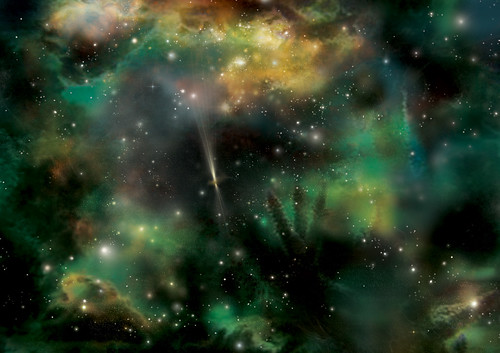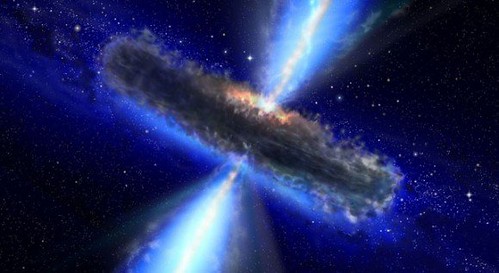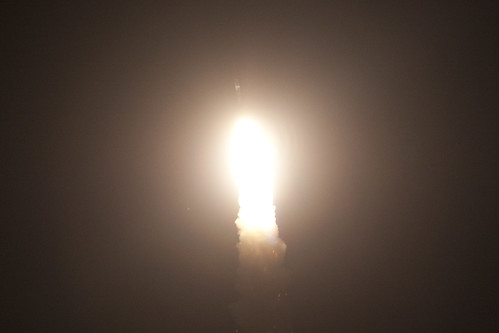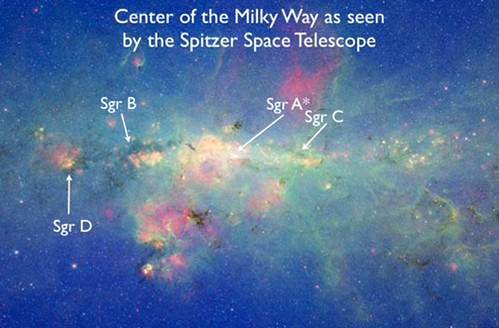Next Stop: the Universe
- By Jason McCracken
- June 21, 2013
- 4 Comments
The universe is big. Of course it’s big, it’s the universe. Maybe big isn’t a good term, but that’s besides the point. In the vastness that is, what is out there for me? What can I do (hypothetically, of course) in this unfathomably vast menagerie of exotic cosmic objects? Let’s meander a bit.
Any good traveler knows the best way to get to know the local riffraff (assuming there is riffraff) is by going to the local hotspots. Usually this consists of a restaurant, club, local pool or pub. Personally, I enjoy a good swim, and pubs have the best music. So on this journey through the cosmos, where does one find such attractions?
Conveniently, 12 billion (12,000,000,000) light years away there is a pool of water containing at least 140 trillion times the amount of water in all of the Earth’s oceans combined. How far is that really? A light year is the distance it takes light to travel in a year. Go flip your light switch on and off. Light is pretty quick. It is really hard to consider light not just being there… but going there. So, in a year, light travels 5,878,600,000,000 miles. In 12 billion years? Well, just multiply that last distance by 12 billion and see “error” pop up on you calculator. It’s pretty far. The record for speed in a manned spacecraft was the Apollo 10 at 24,790 mph. Going that speed, it would still take us 2,845,631,303 years to get there. Like my friends at Sesame Street do, I think it’s better we use our imagination for now.

Next stop, old age!
Illustration of a Gamma Ray Burst. Credit: NASA
This cloud of water vapor resides within the APM 08279+5255 quasar. Within? Within. Quasars are active centers of galaxies with super-massive black holes at its core. This black hole is 51 times the radius of our Sun, and our cosmic natatorium circles around it within the quasar that is hundreds of light years across. So bring your friends and dive in! Just don’t stay in for too long. The -63°F (-53°C) might get to you.

3D pools are the wave of the future!
Illustration of a Quasar. Credit: NASA
How did this giant basin come to be? Water is a molecule composed of oxygen and hydrogen atoms, and hydrogen is the most abundant element in the universe. Oxygen can form in stars, and given a large event, like a supernova, will disperse and bond with the hydrogen to form large clouds of water. The light from this object took 12 billion years to reach Earth, so sit back and relax. It’s a long drive. After the dip we can make a stop somewhere for a drink or two.

Hope everyone went to the bathroom before we left.
Minotaur Rocket Launch at NASA Wallops. Credit: NASA
A little out of the way, and towards the center of our own Milky Way Galaxy, is a cloud called Sagittarius B2, a mere 26,000 light years from Earth. Astronomers have found there to be 10 billion, billion, billion (that’s 27 zeroes) liters of methanol and ethanol molecules in the cloud – compare that to the 1,260 billion, billion (18 zeroes) liters of water on Earth! While methanol is rather deadly to consume, ethanol is the main component in alcoholic beverages. What’s even more accommodating is the abundance of ethyl formate found as well. This compound smells like rum and is a component that contributes to what gives raspberries their flavor. So with 10 billion billion billion liters, every hour can be happy hour, just as long as your drink of choice is raspberry rum. This cloud is not without its flaws, though. As stated earlier there is an abundance of methanol, but astronomers have also found propyl cyanide (Butyronitrile), a particularly lethal compound and one of the largest molecules found in deep space.

I’m gonna need a bigger glass.
Credit: NASA JPL/Caltech/Univ. of Wisconsin
Scientists study Sagittarius B2 in search of vital compounds for life, amino acids. Currently the search continues, but scientists are ever hopeful as they find larger and more complex molecules out there. The more complex molecules are created when smaller molecules attach to dust particles in space and combine when they collide with each other.
And so we begin our adventure, spanning over 12 billion light years… and we’ve barely scratched the surface (or aged, but that’s a whole other can of worms). Next time, we may just sit back for a second and relax as the universe unfolds for us and watch as the stars go by. (at 2 million mph!)
As always, feel free to comment. Tell me what’s good and bad and all the things between. If you have a destination you may want to go, throw it at me and I may just totally go there. For real! (Well, not for real, but you get the point.)



Excellent blog and article! Thank you very much! Keep up the great work!
Thanks Leonidas. I’ll do what I can as much as possible!
The best way to know what’s local is to stop in a pub and roll a D20 hoping for a brawl.
Interesting article. However, with the quasar being so far, how are we certain of its makeup, specifically the amount of water?
Excellent question! As you said, the quasar is very far away. We can’t just hop in are cars and get a sample. But we can observe it. And the light from the quasar actually tells us a lot about it. As the light passes throught the cloud, the materials in it absorb some of the light and leave a signature in the light that makes it through. This signature is very specific to the elements that make. So when we observe the light that passes through the cloud we can what the composition is by the signatures left behind. As far as how big something is, that can be a little tricky. Gravity and motion of interacting bodies is a big help. As objects orbit each other we can calculate the acceleration with light and then figure the mass of the interacting objects by using equations that link gravitational acceleration and mass.